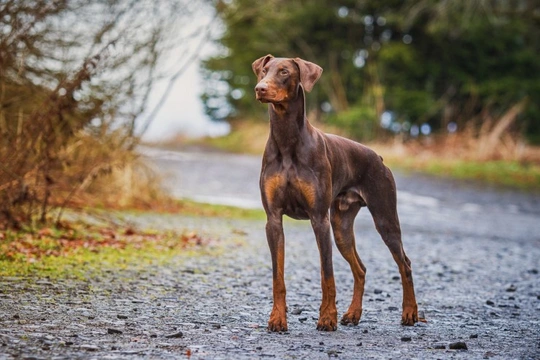
Schutzhund Training Explained
You may not have heard of Schutzhund although it is an activity that's become a lot more popular in recent times. It’s a training programme that more dogs are now taking part in whereas in the past it tended to be just German Shepherds that were put through their paces as a way of finding the best dogs to use in breeding programmes. It's a very precise form of dog training which involves strict discipline as well as self control on the part of both owners and their dogs. As such it demonstrates an incredible bond between them.
The sport has been around for a while with dogs being put through their paces involving pretty rigorous training programmes. Dogs are asked to do very specific challenges which are demanding to say the least not to mention the co-operation that both dogs and owners have to demonstrate when they take part in competitions. However, although rigorous it's an activity that encourages dogs and their handlers to have fun as they take on specific challenges whether it's going over an obstacle course carrying an awkward object or something else that’s just as challenging.
The idea behind Schutzhund is for handlers and dogs to develop a strong bond and understanding of what is being asked of them, combining many disciplines which include the following:
- Obedience
- Strength
- Agility
- Scenting
A Little Background History
Schutzhund trials were first set in place to find the best German Shepherd dogs to use in breeding programmes in order to continue producing the top lines. It set the standard pretty high so only the best dogs were used for breeding. The result was to produce top quality performance dogs. The tests dogs were put through showcased their strengths typical of the breed which include:
- Ability to work
- Composure
- Scent tracking
- Protective trait
- Strength
- Agility
Schutzhund Trials Today
Today, Schutzhund is a little different although the basics remain the same. However, it is less “intense” with owners taking part in the sport more as a hobby with others getting involved because they enjoy the competitive side of Schutzhund. However, this is not an activity that suits all dogs because it is still quite demanding although not quite as rigorous as it once was. Some dogs take really well to it and very often it is not the strongest or the fastest that make it to the top!
The Training Involved
Dogs need to have reached a certain age in order to compete in Schutzhund which is typically when they are 18 month old. Once old enough, dogs have to go through a behavioural “pre-trial” test to see if they would quality to take part in this demanding sport. This first test includes establishing whether a dog has the following traits:
- Calmness
- Self-control when put under pressure
- Self-control when meeting strangers
- How they react when confronted with a loud and sudden noise
A dog would have to demonstrate they are capable of following all the basic commands and responsive to handlers when they are on or off the lead. If a dog passes the pre-test, there are nine other tests they would be put through with each level having 3 tests which a dog has to pass and each level is more difficult than the last one.
It's a great achievement for a dog and handler to even qualify for Schutzhund with the ultimate prize being to reach level 1, 2 and 3. Level 3 is the highest accolade a dog can reach and to get there requires many hours of training and complete dedication to the sport. A champion dog would demonstrate an amazing talent in several different disciplines all of which are pretty challenging to say the least.
Today, any breed or mixed breed dog can take part because as previously mentioned, Schutzhund is not reserved for just German Shepherds anymore although smaller dogs might find it hard to scale a 6 foot wall when carrying something heavy in their mouths which is one of the many things dogs are asked to do when taking part in this often strenuous and challenging activity.
Breeds most commonly seen taking part in Schutzhund include:
- Airedale Terrier
- American Bulldog
- Australian Cattle Dog
- Belgian Malinois
- Belgian Sheepdog
- Beauceron
- Black Russian Terrier
- Bouvier des Flanders
- Boxer
- Cane Corso
- Doberman Pinscher
- Dutch Shepherd Dog
- Giant Schnauzer
- Great Dane
- Mastiff
- Rottweiler
- Belgian Tervuren
Conclusion
Shutzhund is a demanding sport and one that not all dogs are suited to taking part in and all dogs once they are old enough have to go through a pre-test to see if they have the traits needed. It’s worth noting that it’s not the strongest or the fastest dogs that make the grade as it really does depend on stamina, endurance and the tight bond many dogs have with their owners that makes them so good at this challenging canine activity.



